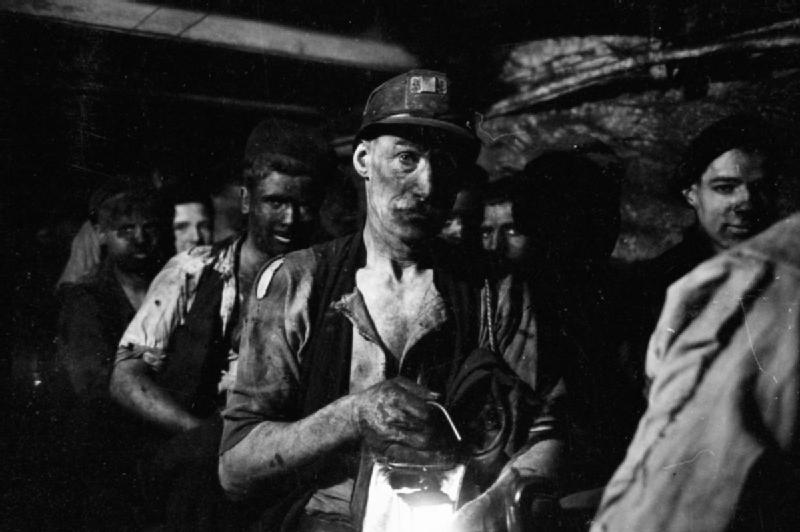Friday, December 18 was the last working day of the mine Kellingley in the English county of North York. No working deep coal mines remains after its closure in the UK.
Lack of state support, fall in coal prices and increased use of alternative energy sources (e.g. shale gas) have forced management to close the mine. The decision was taken in March. Initially the company UK Coal - the country's largest private operator of coal mines - was planning to wheedle additional financing out of the government for Kellingley and Thoresby (closed this summer) mines until 2018. However, Minister for the Cabinet Office and Paymaster General, Matthew Hancock said that required £ 338 million is too much, and the government is not waiting any return on investment in this sector anymore.
Kellingley was launched in April 1965, mining production was privatized in 1994. As recalled by Sky News, at the peak of its activity Kellingley employed 1.6 th. miners. Now, after several waves of cuts, the number of miners was reduced to 450. All of them are receiving redundancy packages equal to average salary for 12 weeks from UK Coal.
Former greatness
Kellingley’s closure marks an important milestone in the history of British Industry, said Professor Steven Fothergill from Sheffield Hallam University. "The Industrial Revolution in Britain was fueled by coal. In 1980, closure of the mines could have been attributed to revenge from the Conservative government for strikes. Yet now, the causes are purely economic - says Fothergill. - British coal could no longer compete with foreign ones. We proceed using coal, but not local."
Thatcher vs. Miners
In the early 1980s, financial policy of the new British Prime Minister Margaret Thatcher consisted of curbing inflation and appreciation of the pound sterling. This had a negative impact on export-oriented industries and, together with mass closure of unprofitable mines, led to increased unemployment and discontent spreading widely among miners.
In 1984, this resulted in a nationwide strike of miners, organized by the National Union of Mineworkers (NUM) and supported by other movements (sailors, electricians, communists, LGBT activists). A year after, the strike was defeated, and the government continued its economic reforms.
According to the Ministry of Energy of the United Kingdom, imports of coal for all purposes numbered 41.8 million tons in 2014. The vast majority of this amount (35.3 million tons or 84%) was thermal coal used in power stations. At the end of the second quarter of 2015, coal imports fell twice compared to January-March and accounted for 5.2 million tons - mainly due forge coal (coking coal imports fell only by 3%).
The government recorded a fall in imports of coal for power stations in all major sources of raw materials: 80% from the US, 64% from Russia and 35% from Colombia.
At the same time, coal production in Great Britain amounted to 12 million tons in 2014 - 3.5 times less than imports volume. Of this amount, exactly one third (4 million tons) accounted for deep coal mines. Thus, Britain has only open production facilities now, the performance of which fluctuated around 10-20 million tons per year during the last 70 years (only 8 million tons in 2014).
Black streak
UK coal production set a historical record in 1913 (292 million tons). Since then, production volumes have fallen steadily, and since 1971 (when Britain joined the European Union), the country began to import coal.
British coal mining is being reduced. On the other hand, the industry is growing all over the world, according to U.S. Energy Information Administration (EIA). After stagnation in 1990s, world production is increasing since 2000, having reached 7.8 billion tons in 2012. Over the past five years, cost of coal has fallen twice and was $ 47.5 per metric ton in the mid-December.
Following fall in prices on the world market, there has been a stagnation of coal again. According to the World Coal Association (WCA), in 2013 the world mined the same 7.8 billion tons (same as a year earlier). Also on 18 December, the International Energy Agency (IEA) presented a disappointing forecast: in the coming years, demand for coal on the world market will show minimal growth (around 0.8% per year), what will further aggravate the industry’s crisis.
Overall, the IEA sharply lowered its forecast for coal consumption by 2020 - up to 5.8 billion tons, 500 million tons lower than estimated previously. The crisis is caused not only by fall in prices, but also by slowdown in the Chinese economy and results of the climate summit in Paris. "Coal burning is the main source of carbon dioxide emissions into the atmosphere - remind IEA experts. - Current volume of combustion is not compatible with the course of the international community to stabilize the climate. "
source: theguardian.com
Lack of state support, fall in coal prices and increased use of alternative energy sources (e.g. shale gas) have forced management to close the mine. The decision was taken in March. Initially the company UK Coal - the country's largest private operator of coal mines - was planning to wheedle additional financing out of the government for Kellingley and Thoresby (closed this summer) mines until 2018. However, Minister for the Cabinet Office and Paymaster General, Matthew Hancock said that required £ 338 million is too much, and the government is not waiting any return on investment in this sector anymore.
Kellingley was launched in April 1965, mining production was privatized in 1994. As recalled by Sky News, at the peak of its activity Kellingley employed 1.6 th. miners. Now, after several waves of cuts, the number of miners was reduced to 450. All of them are receiving redundancy packages equal to average salary for 12 weeks from UK Coal.
Former greatness
Kellingley’s closure marks an important milestone in the history of British Industry, said Professor Steven Fothergill from Sheffield Hallam University. "The Industrial Revolution in Britain was fueled by coal. In 1980, closure of the mines could have been attributed to revenge from the Conservative government for strikes. Yet now, the causes are purely economic - says Fothergill. - British coal could no longer compete with foreign ones. We proceed using coal, but not local."
Thatcher vs. Miners
In the early 1980s, financial policy of the new British Prime Minister Margaret Thatcher consisted of curbing inflation and appreciation of the pound sterling. This had a negative impact on export-oriented industries and, together with mass closure of unprofitable mines, led to increased unemployment and discontent spreading widely among miners.
In 1984, this resulted in a nationwide strike of miners, organized by the National Union of Mineworkers (NUM) and supported by other movements (sailors, electricians, communists, LGBT activists). A year after, the strike was defeated, and the government continued its economic reforms.
According to the Ministry of Energy of the United Kingdom, imports of coal for all purposes numbered 41.8 million tons in 2014. The vast majority of this amount (35.3 million tons or 84%) was thermal coal used in power stations. At the end of the second quarter of 2015, coal imports fell twice compared to January-March and accounted for 5.2 million tons - mainly due forge coal (coking coal imports fell only by 3%).
The government recorded a fall in imports of coal for power stations in all major sources of raw materials: 80% from the US, 64% from Russia and 35% from Colombia.
At the same time, coal production in Great Britain amounted to 12 million tons in 2014 - 3.5 times less than imports volume. Of this amount, exactly one third (4 million tons) accounted for deep coal mines. Thus, Britain has only open production facilities now, the performance of which fluctuated around 10-20 million tons per year during the last 70 years (only 8 million tons in 2014).
Black streak
UK coal production set a historical record in 1913 (292 million tons). Since then, production volumes have fallen steadily, and since 1971 (when Britain joined the European Union), the country began to import coal.
British coal mining is being reduced. On the other hand, the industry is growing all over the world, according to U.S. Energy Information Administration (EIA). After stagnation in 1990s, world production is increasing since 2000, having reached 7.8 billion tons in 2012. Over the past five years, cost of coal has fallen twice and was $ 47.5 per metric ton in the mid-December.
Following fall in prices on the world market, there has been a stagnation of coal again. According to the World Coal Association (WCA), in 2013 the world mined the same 7.8 billion tons (same as a year earlier). Also on 18 December, the International Energy Agency (IEA) presented a disappointing forecast: in the coming years, demand for coal on the world market will show minimal growth (around 0.8% per year), what will further aggravate the industry’s crisis.
Overall, the IEA sharply lowered its forecast for coal consumption by 2020 - up to 5.8 billion tons, 500 million tons lower than estimated previously. The crisis is caused not only by fall in prices, but also by slowdown in the Chinese economy and results of the climate summit in Paris. "Coal burning is the main source of carbon dioxide emissions into the atmosphere - remind IEA experts. - Current volume of combustion is not compatible with the course of the international community to stabilize the climate. "
source: theguardian.com



















